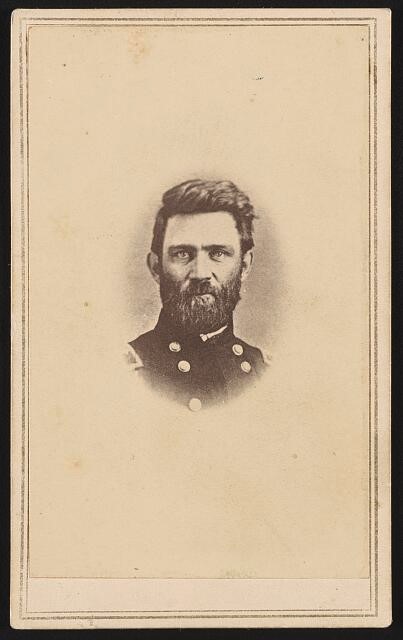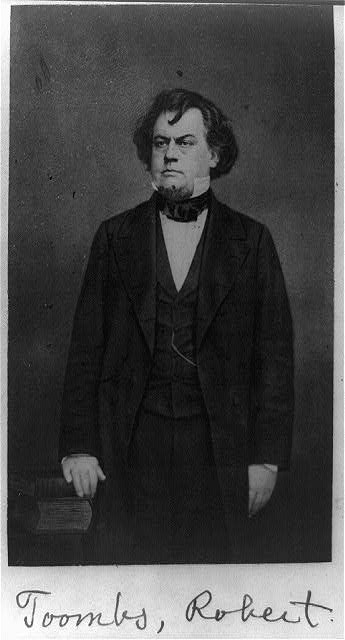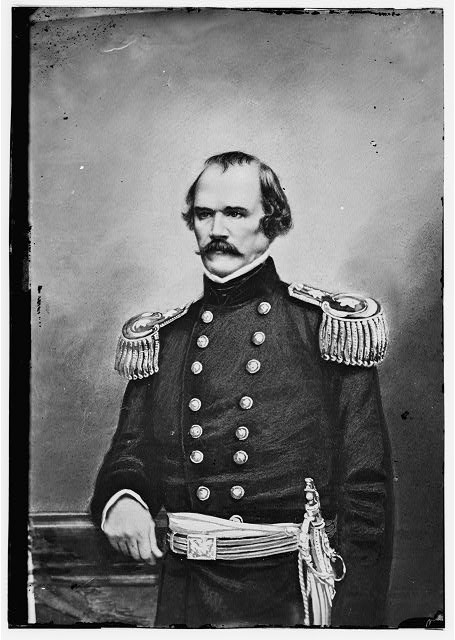Table of Contents
This is final installment of the Wounded Generals series. This installment will look at the wounding of Union generals John Sedgwick and Samuel Allen Rice as well as Confederate generals Robert A. Toombs and Albert Sidney Johnston.

Major General John Sedgwick, 2nd Division, II Corps, Army of the Potomac:
Major General John Sedgwick began his Civil War service as a colonel in the Military Department of Washington but missed the First Battle of Bull Run while he recovered from cholera. The following month he was promoted to Brigadier General and was later promoted to Major General after the Seven Days Battles.
During the Battle of Antietam, Sedgwick was given the task of pushing the offensive in the West Woods, his division massively outnumbered the Confederate defenders. A brutal counterattack by the Confederates pushed his division back after taking a massive number of casualties. Sedgwick himself was wounded during this counterattack, having been shot three times and falling from his horse. His men carried his unconscious body off the field for treatment.
Sedgwick recovered from his wounds a few months later, resuming his command after the Battle of Fredericksburg. He was then promoted to the commander of the II Corps, followed by commands with the IX Corps and finally the VI Corps. He commanded the VI Corps until his death at the Battle of Spotsylvania Courthouse at the hands of Confederate sharpshooters after saying that “they couldn’t hit an elephant at this distance [1,000 yards].” When news reached Ulysses S. Grant, he asked “is he really dead?”[1]

Brigadier General Samuel Allen Rice, 2nd Brigade, 13th Division, XIII Corps:
Samuel Allen Rice moved to Iowa in 1851 after graduating from Union College in 1849 to practice law. In 1856 he served as Iowa’s second Attorney General until the outbreak of the Civil War. He began his service as Colonel of the 33rd Iowa Volunteer Infantry and was later appointed Brigadier general in 1863. In 1864, Rice led his brigade during the Red River Campaign throughout Louisiana and Arkansas.
On April 30th, at the Battle of Jenkins’ Ferry, Rice and his brigade were engaged by a group of Confederate skirmishers while waiting for a ferry to take the Union forces across the Saline River. While commanding his brigade, Rice was shot by a Confederate bullet that hit him in the foot. The wounded general was evacuated from the field and eventually taken back to Oskaloosa for further treatment.[2]
Several weeks after receiving his initial wound at Jenkins’ Ferry, Brigadier General Samuel Allen Rice died of his wounds on July 6, 1864, at 36 years old. His exact cause of death has been disputed as he may have also contracted a fatal disease after being shot. Rice was the highest-ranking officer from Iowa to be killed during the Civil War. He was survived by his younger brother Major General Elliott Warren Rice, US Volunteers.

Brigadier General Robert Toombs, David R. Jones’ Division, Army of Northern Virginia:
Before the outbreak of the Civil War, Robert Toombs held the offices of State Senator (1837-1843), US House of Representatives (GA, 1845-1853), and US Senator (GA, 1853-1861) before joining his Southern companions in the Confederate government. CSA President Jefferson Davis appointed him to serve as Secretary of State, however, Toombs only held that position for less than 6 months before taking a commission in the Confederate army. He remained in command of his brigade through the first two years of the war.
At the Battle of Antietam, Toombs was in command of the defense at what is now called Burnside’s Bridge. The 500 Confederate soldiers held off Major General Ambrose Burnside’s IX Corps until the 51st Pennsylvania and New York infantry regiments broke through. During his command of the defense of the bridge, Toombs was wounded in the hand. It was not a severe wound as he would continue commanding his brigade throughout the rest of the battle.
Toombs resigned his commission in 1863 to return to Georgia before joining the 3rd Cavalry of the Georgia Militia. After the war ended, Federal troops showed up to his house in an attempt to arrest Toombs. He escaped through Georgia and Alabama before making his way to New Orleans followed by Havana and then Paris with fellow Confederate General P.G.T. Beauregard. He returned to Georgia in 1867 where he remained until his death in 1885.[3]

General Albert Sidney Johnston, Commanding General of the Department of the West, CSA
Before the Civil War Broke out, General Albert Sidney Johnston had a long and distinguished military career in the Army. When his home state of Texas seceded, he resigned his commission and began the journey to Richmond. Confederate President Jefferson Davis gave him command of the Department of the West. After Union General Ulysses Grant’s victories at Fort Henry and Donelson, Johnston moved his command to Corinth, Mississippi while Grant advanced to Pittsburgh Landing.
In early April, Johnston began to move his army to face Grant on the field, intending to attack on April 5, 1862. However, due to heavy rains, his attack was delayed until the following day. Advancing on the Union troops on the morning of April 6, Johnston caught the Union troops off guard near the Shiloh Church. A brutal and bloody battle ensued and as the Confederates pushed the Union army to the river, Johnston was shot in the leg.
Because of a previous injury suffered in a duel, it is believed that he did not feel the bullet enter his leg, which likely hit an artery. This caused him to rapidly lose blood, filling his riding boot. Johnston bled to death on the battlefield, it is believed that he did carry a tourniquet on him at the time and had he realized he was shot, that tourniquet could have saved his life. The following day, Grant rallied his lines and pushed the Confederates off the field of battle.[4]
About the Author
Michael Mahr is the Education Specialist at the National Museum of Civil War Medicine. He is a graduate of Gettysburg College Class of 2022 with a degree in History and double minor in Public History and Civil War Era Studies. He was the Brian C. Pohanka intern as part of the Gettysburg College Civil War Institute for the museum in the summer of 2021.
Sources
[1] “John Sedgwick.” American Battlefield Trust, n.d. https://www.battlefields.org/learn/biographies/john-sedgwick.
[2] “Brigadier General Samuel Allen Rice; Civil War Hero.” Iowa Heritage Digital Collections, n.d. https://www.iowaheritage.org/items/show/78791.
[3] Justice, George. “Robert Toombs – New Georgia Encyclopedia.” New Georgia Encyclopedia, June 8, 2017. https://www.georgiaencyclopedia.org/articles/history-archaeology/robert-toombs-1810-1885/.
[4] “Albert Sidney Johnston.” American Battlefield Trust, n.d. https://www.battlefields.org/learn/biographies/albert-sidney-johnston.


